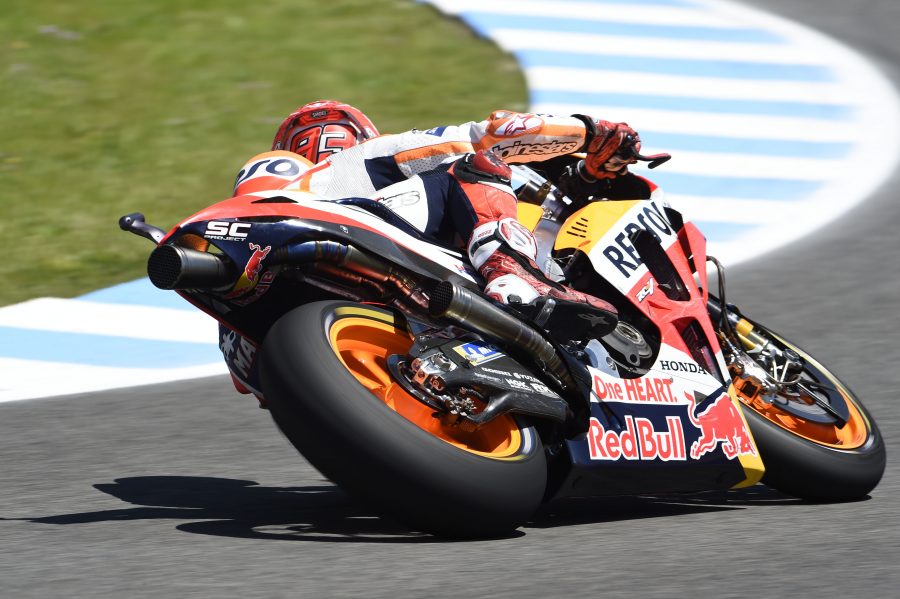Marquez has never looked more dominant and his carbon swingarm might be why
His most recent riding masterclass, combined with a new, lightweight carbon-fibre swingarm, signal Marc Marquez and the Honda RC213V are on the road to a fifth MotoGP World Championship.
The message was clear as Marquez coasted to a five-second victory in the Spanish GP at Jerez. He has now won two of the opening four races for a 50 per cent win ratio.
Jerez was his second win in a row following the comprehensive battering of rivals in the Texas GP, and is evidence of the strengthening of Marquez’s uncompromising mental ability.
This is his response to the stinging criticism of his self-confessed mistake in bumping Valentino Rossi out of the Argentine GP.
At Jerez Marquez was clever, patient and scarily fast.
He says he is “motivated by the extra pressure” from the focus on his often impetuous style, and that he feels “more comfortable” under pressure.
“I learn from my mistakes,” Marquez said. “But I will always do things my way. I like to speak on the track.”
He’s described this year’s RC213V as a “sweet package” with some smoothing out of the Honda’s previously brutal power delivery and handling manners.
His win in last month’s Texas GP was the first by Honda in MotoGP using a carbon-fibre swingarm, now followed by the Jerez triumph.
“We don’t know the exact difference it makes, like one- or two-tenths a lap,” Marquez said. “It is more about the feeling on the bike; it is more sensitive and if you change your style a little then the bike feels immediately different. If you understand this, you can be faster.”
Teammate Dani Pedrosa started from the front row and looked strong during the Jerez race before he was involved in the incident that saw Andrea Dovizioso, Jorge Lorenzo and himself all crash out of podium contention.
The new swingarm
Weight is key
HRC’s MotoGP project leader Takeo Yokoyama gave a rare insight into a crucial advantage of the carbon-fibre swingarm.
There are now more options for ballast, before the minimum weight limit is reached.
“One of the main benefits is the weight; the carbon is much lighter than the aluminium unit, so this allows us to play with ballast and move it to places to improve the balance of the bike,” Yokoyama said. “With many parts we have a tolerance of just 50 or 100 grams in terms of saving weight, but the carbon swingarm is a much, much bigger weight saving.
“Dynamically speaking it is not possible to directly compare the spec or stiffness ratios between carbon and aluminium because the materials have different properties, but we always aim to give the rider a better feeling and the lower weight of the carbon-fibre swingarm is an important factor.”
Honda will continue to have both the carbon and aluminium units on hand. Only after back-to-back comparisons during practice will the riders decide which unit they’ll race with.
By Colin Young

Marquez, Spanish MotoGP 2018